
All categories
Featured selections
Trade Assurance
Buyer Central
Help Center
Get the app
Become a supplier

(944 products available)

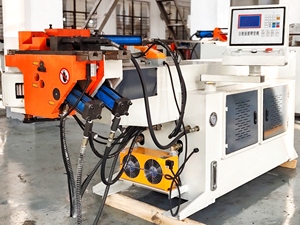

















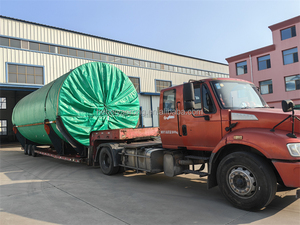


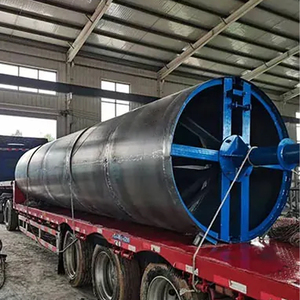



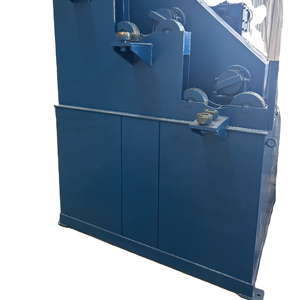




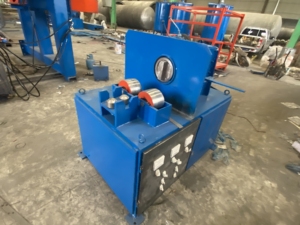
Grp pipe winding mandrels are essential components in the production of GRP (Glass Reinforced Plastic) pipes. They serve as temporary molds around which the composite material is wound to form the pipe. Different types of winding mandrels are used for various manufacturing processes and requirements.
When using the grp pipe mandrel, it is essential to consider several factors to select the most appropriate type. The size, shape, and complexity of the pipes being produced are crucial considerations. Additionally, production efficiency and cost-effectiveness are significant factors to consider, along with the ease of mandrel removal after curing and the quality requirements of the final GRP product. By carefully evaluating these factors, manufacturers can choose the right mandrel for their specific needs and ensure optimal production results.
Material:
The material determines the strength and quality of the pipes. Stainless steel is resistant to rust and corrosion, ensuring longer durability. Carbon steel is preferred for its cost-effectiveness and robustness, particularly in heavy-duty applications. Aluminum is lightweight, facilitating easy handling and transportation. Copper possesses inherent antimicrobial properties, making it suitable for applications that require hygiene and minimal bacterial growth. Titanium offers exceptional strength and corrosion resistance, especially in challenging environments, such as marine or chemical industries.
Length and Diameter:
The length and diameter of the mandrel affect the size and amount of GRP pipes that can be produced.
Surface Finish:
Mandrels may have different surface finishes, such as polished or matte. A polished surface can help achieve smoother pipes, while a matte finish may provide better grip for coatings.
Load Capacity:
This refers to the maximum weight the mandrel can support during the winding process without deforming or damaging the pipe. Knowing the load capacity helps to select the proper mandrel for specific production needs and ensures that the equipment can handle the manufacturing demands.
Temperature Resistance:
It refers to the ability of the mandrel material to withstand high temperatures during the curing process of GRP pipes without losing its shape or integrity. Selecting mandrels with appropriate temperature resistance ensures the quality of the produced GRP pipes.
Coating Options:
Some mandrels may have different coatings, such as Teflon or epoxy, which can improve release properties and reduce friction during the winding process.
Regular cleaning:
Clean the mandrel with soapy water and a soft brush or cloth to remove the dust and dirt. Avoid using abrasive materials to prevent damage to the surface of the mandrel.
Inspection:
Regularly inspect the mandrel for signs of damage, such as cracks, deformation, or wear. Repair or replace the mandrel immediately if any damage is noticed to ensure the quality of the GRP pipes.
Lubrication:
Apply appropriate lubricant to the surface of the mandrel to reduce friction and improve the release performance during the winding process. Ensure the lubricant is suitable and evenly applied.
Storage:
Store the mandrels in a dry and ventilated place to avoid dampness and mould growth. Also, make sure they are not subjected to heavy pressure or stacking to prevent deformation or damage.
In large-scale industrial environments, grp mandrels are crucial for creating high-quality GRP pipes. These heavy-duty machines support the pipe as layers of resin and fiber are deposited on it. By providing a stable foundation during this process, they ensure that the final product is strong and resilient.
The oil and gas sector frequently utilizes grp mandrels in various forms of pipe production. They are essential for producing pipes employed in offshore oil extraction activities. Such activities require equipment that can endure extreme environmental conditions, such as high temperatures or corrosive substances. Additionally, grp mandrels assist in creating lightweight yet durable pipes used for transporting oil from offshore platforms to onshore refineries.
In the automotive and aerospace industries, grp mandrels also play an important role but on a larger scale. The focus here is on the creation of composite tubes or pipes that serve as structural components in vehicles or airplanes. In these sectors, the use of these machines allows for lightweight constructions that do not compromise safety standards.
Electronics manufacturing surveillance equipment, such as CCTV cameras, also makes use of grp mandrel machines. These devices often employ fiber optic technology for high-definition imaging capabilities, which necessitates the need for slender tubes that can house optical fibers. The simple operation of these machines and their capacity to create precise fiber optic cables make them appropriate investments for manufacturers of surveillance equipment.
As shown above, the uses of a grp mandrel machine are diverse but remain concentrated within certain industries where there is an ongoing demand for strong, lightweight piping solutions made from glass reinforced plastic. Such qualities are only achievable through the aid of machines like the mandrel machine during pipe production.
When buying winding mandrels for GRP pipes, several factors need to be considered to ensure that the product meets the intended use requirements.
Material quality
The material used to manufacture the mandrel is essential for its performance and longevity. Ideally, buyers should go for steel or aluminum alloys with high tensile strength and corrosion resistance. Such materials can withstand the wear and tear of pipe production and provide a durable shaping base.
Compatibility
It's crucial to ensure that the chosen mandrel model aligns with the specific pipe design requirements. Buyers should consider factors like the required pipe diameter and the type of GRP reinforcing that corresponds. Also, the winding mandrel's dimensions and design features should fit the production equipment they are using.
Ease of use
Operating the winding mandrel should be a straightforward task. Features like clear instruction manuals, intuitive assembly mechanisms, and manageable weight should be prioritized. Ease of use contributes to efficient production processes and reduces the likelihood of errors during pipe manufacturing.
Cost-effectiveness
While initially, the price of the winding mandrel may appear to be the most crucial consideration, it is essential to understand that long-term cost efficiency is determined by the performance, durability, and adaptability of the chosen mandrel. A low-cost option that requires frequent replacement could end up being more expensive in the long run.
Supplier's credibility
The supplier selected for the winding mandrel purchase can significantly influence product quality and overall buying experience. It is essential to invest time in researching potential suppliers, considering factors such as their industry experience, reputation among customers, and the level of post-purchase support and assistance they provide.
Q1: How are mandrels removed after the pipe is cured?
A1: After the GRP is fully cured and set, the mandrel can be removed based on the design or by using disassembly techniques.
Q2: What is the lifespan of GRP mandrels?
A2: With proper maintenance, GRP mandrels can last for over a decade.
Q3: What are the trending sizes of GRP mandrels?
A3: The 3 to 10 diameter range is currently in high demand for large-scale industrial pipes.
Q4: Are GRP mandrels environmentally friendly?
A4: Yes. They are recyclable and reduce the need for synthetic materials that harm the environment.